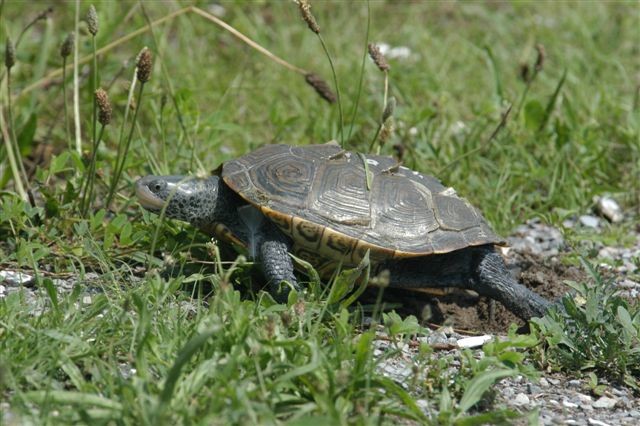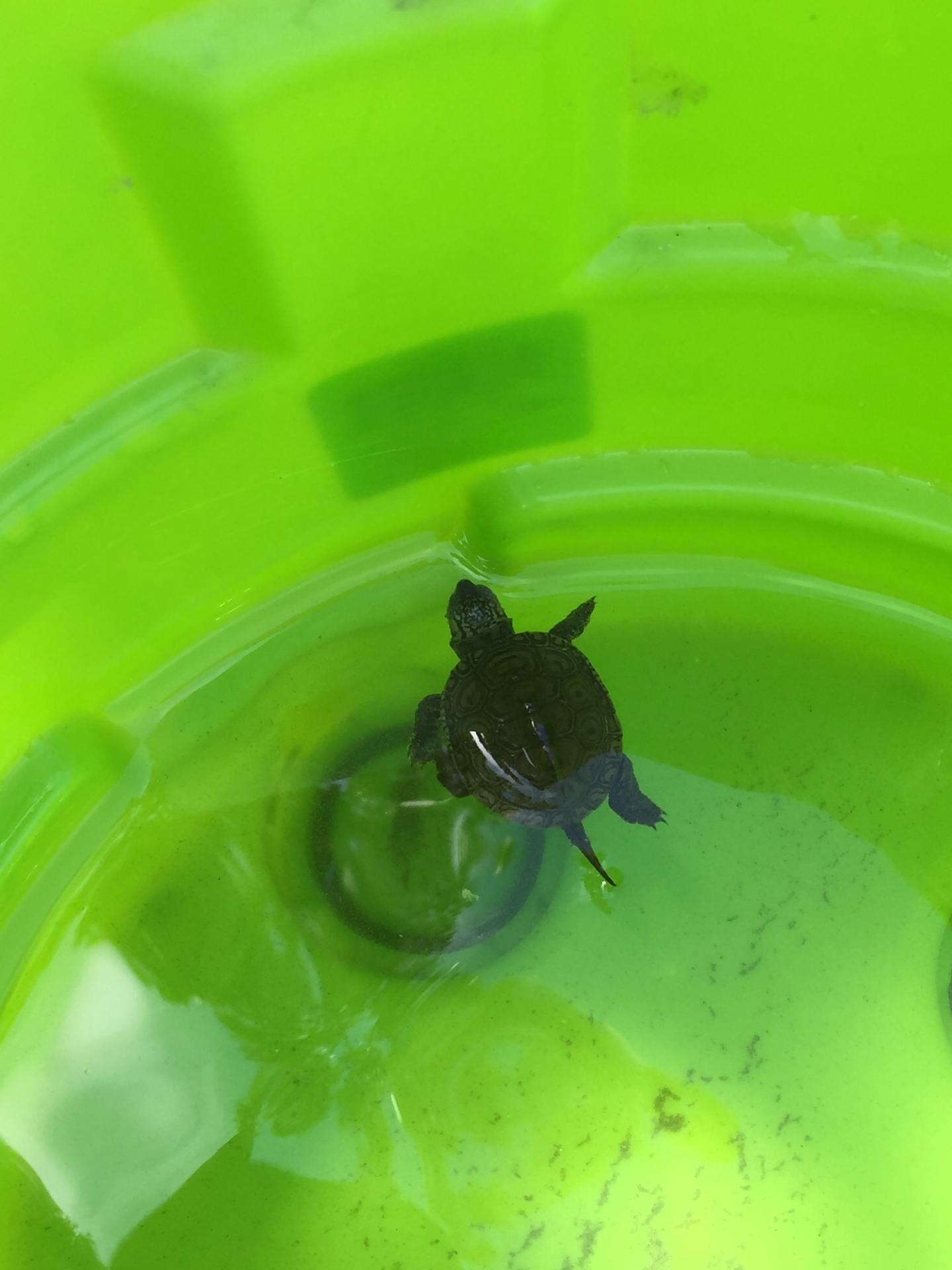It’s turtle nesting time
Help her cross the road, or return her to the nearest marsh
They are known as the Diamondack Terrapin, named for the pattern on their shell, they are the only turtle native to this area and able to survive in the brackish waters of the marsh. There have been reports of sightings crossing Austin Boulevard, Oceanside Road, at the Island Park train station parking lot, in gardens and back yards.
Diamondbacks mate in early spring and lay their clutches of eggs in sand dunes in early summer, now through mid July. The eggs depend the heat of the sand to help them mature, and to determine the sex of the new turtles. The eggs hatch in late summer or early fall.
Diamondbacks do not stray far from where they were hatched, and return to the same area to lay new clutches of eggs when they are grown. When people find them and try to take them to a “safer place” they will attempt to make their way back to their own nesting site. Dr. Russell Burke, Chair of the Department of Biology at Hofstra University said, “When you see them in strange places they are usually going to someplace that used to be a good nesting site, being creatures of habit. The only turtles you will see on land are the females. The best thing to do is to take her back to the nearest salty [marsh] water, she will try again.”
“If you find a baby turtle return it to the marsh but put it on land,” Burke said, “they do not live in water when they are very young.”
If you find an injured turtle call a licensed rehabilitator that specializes in turtles. They are listed at the state Department of Environmental Conservation website. It is illegal to catch and keep native species.
Cats, dogs, shore birds, crows, raccoons, possums and rats can attack nests and hatchlings. Turtles get caught in lobster and crab cages, and too often they drown inside. But the biggest threat to the Diamondback is man. Motorboat propellers inflict serious wounds and often cause death. Bulk heading shorelines and building on beach areas leave them little natural habitat, and now new threats loom, the destruction of the marshes and the rising water levels due to climate change. Burke said the terrapin numbers are dwindling. “They are about 10 percent of what they used to be,” he said, “If we get our marshes back, we get our terrapins back.”
They are unique in that they can determine how salty the water is and can adapt by excreting excess salt, but they need fresh water to drink. However they cannot live long in fresh water, and sadly when people catch them they are placed in tanks and tubs of fresh water, where they soon die. In the wild they can live to up to 40 years.

 45.0°,
Partly Cloudy
45.0°,
Partly Cloudy 









